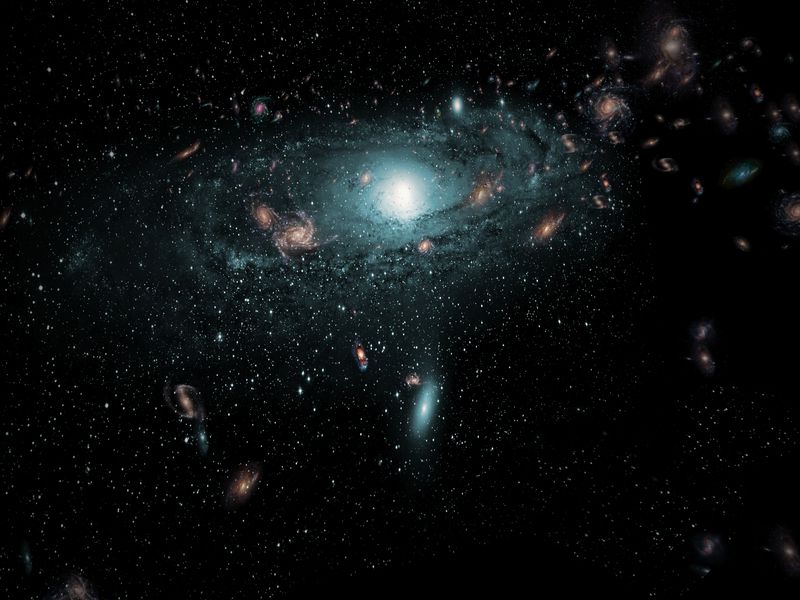
Researchers Find Giant Galaxy Supercluster Hiding In Early Universe
A primitive “supercluster” of comprising of galaxies was discovered by the scientists forming in the early Universe, about 2.3 billion years after the Big Bang.

Nicknamed as Hyperion, the structure has been found to be the largest and most massive one that has been found so early in the formation of the Universe, which came into existence about 13.7 billion years ago.
The titanic mass has been calculated to be one million billion times that of the Sun.

“This is the first time that such a large structure has been identified at such a high redshift, just over two billion years after the Big Bang,” said Olga Cucciati, a researcher at the Astrophysics and Space Sciences Observatory in Bologna along with being a lead author of a study detailing the discovery.
The Redshift is defined as the measurement of the light’s wavelength while it is travelling away from an observer.
“Normally these kinds of structures are known at lower redshifts, which means when the Universe has had much more time to evolve and construct such huge things,” Cucciati said.
Hyperion was located in the constellation of Sextans (The Sextant) and was identified after analyzing a vast amount of data obtained through the VIMOS Ultra-deep Survey. A unique 3D map is provided in the survey of how over 10,000 galaxies are located and distributed in the distant Universe.
The researchers said that Hyperion was quite similar to nearby superclusters, though it has got a completely different architecture.
The research findings were published in the journal Astronomy & Astrophysics.
“Superclusters closer to Earth tend to have a much more concentrated distribution of mass with clear structural features,” explains co-author Brian Lemaux, an astronomer from University of California at Davis.
“But in Hyperion, the mass is distributed much more uniformly in a series of connected blobs populated by loose associations of galaxies.”
The fact that superclusters located nearby have had billions of years for gravity to be able gather matter together to form denser regions may have brought this contrast. But the same process has been acting for more less time in the much younger Hyperion.
As time passes, Hyperion is expected to evolve to form something like Virgo Supercluster, which has got our own galaxy, the Milky Way.
The discovery of this Galaxy Supercluster may need more research to be done to know more about the Universe around us and to know how it came into existence.
You May Also Read: Sharing Of ETA Via Google Maps Now Available On iOS With Facility To Share Location Via Third Party Apps